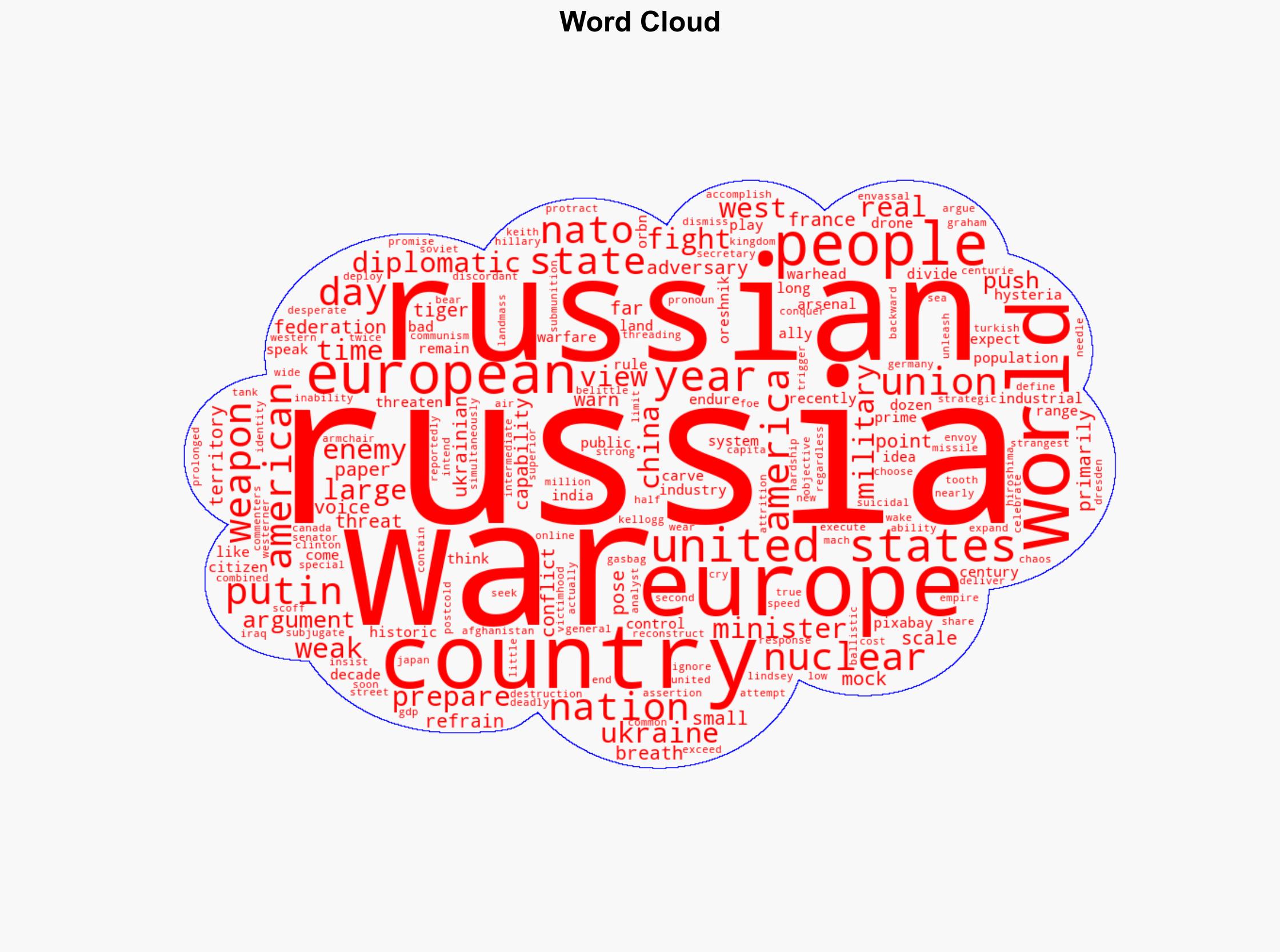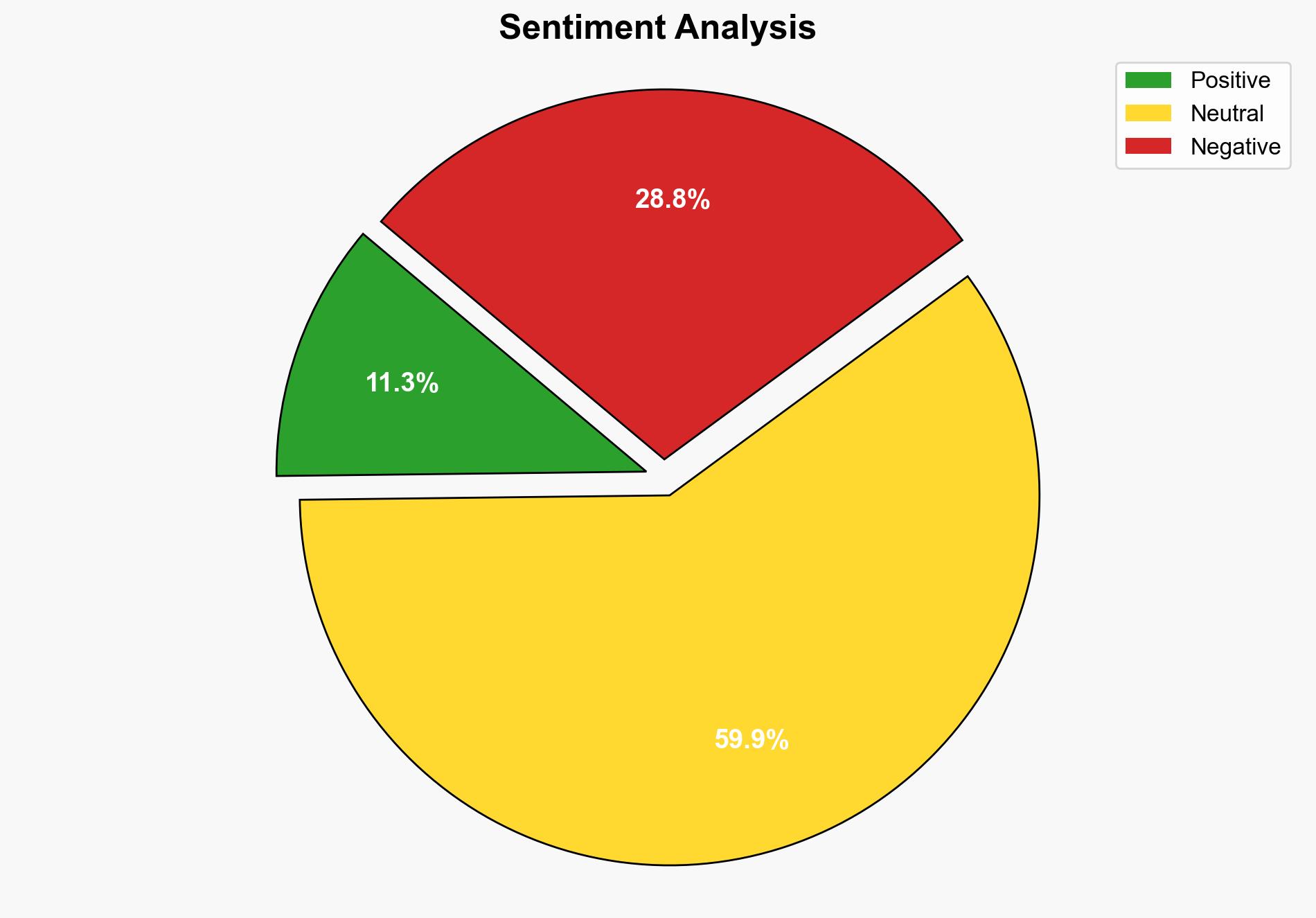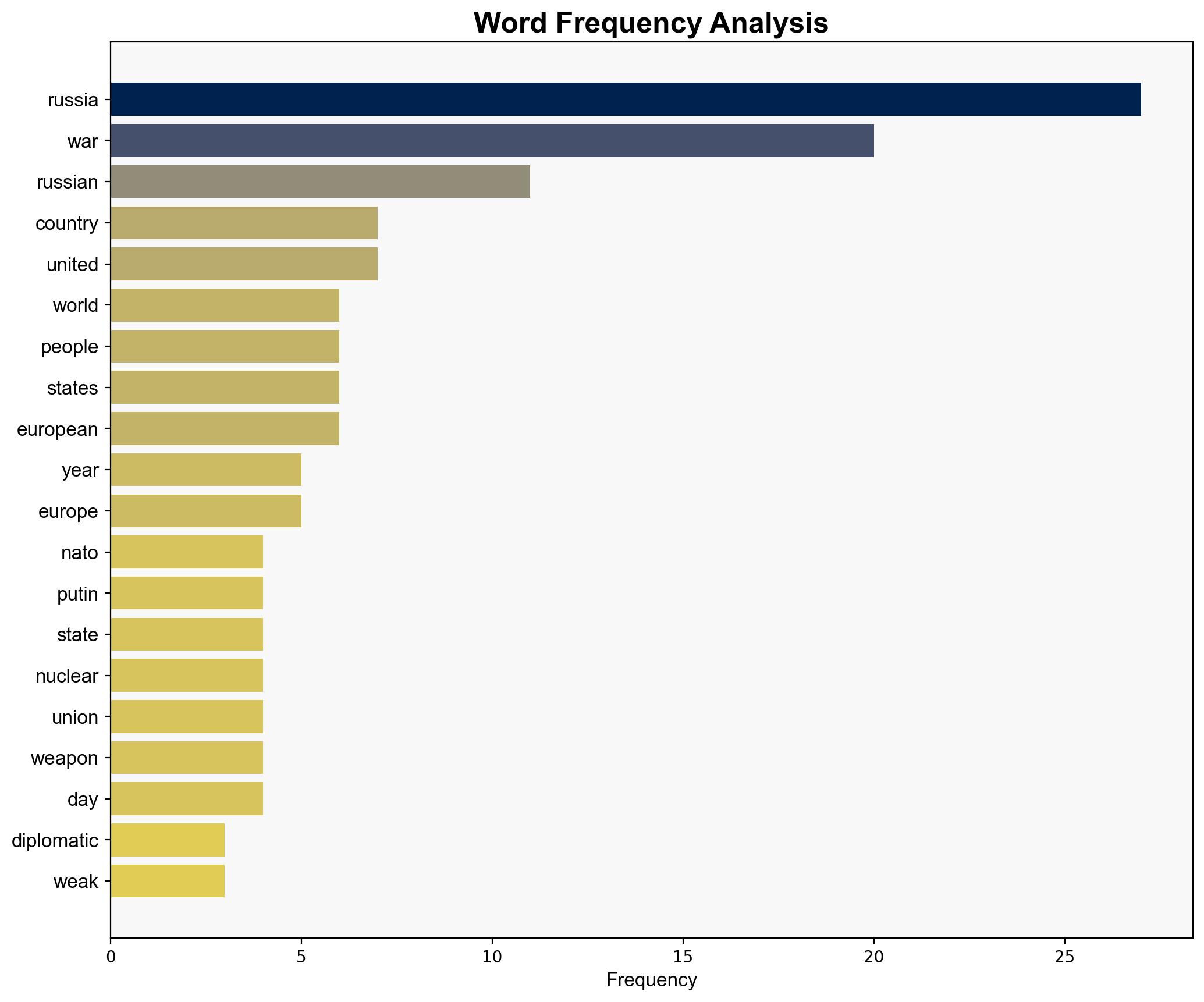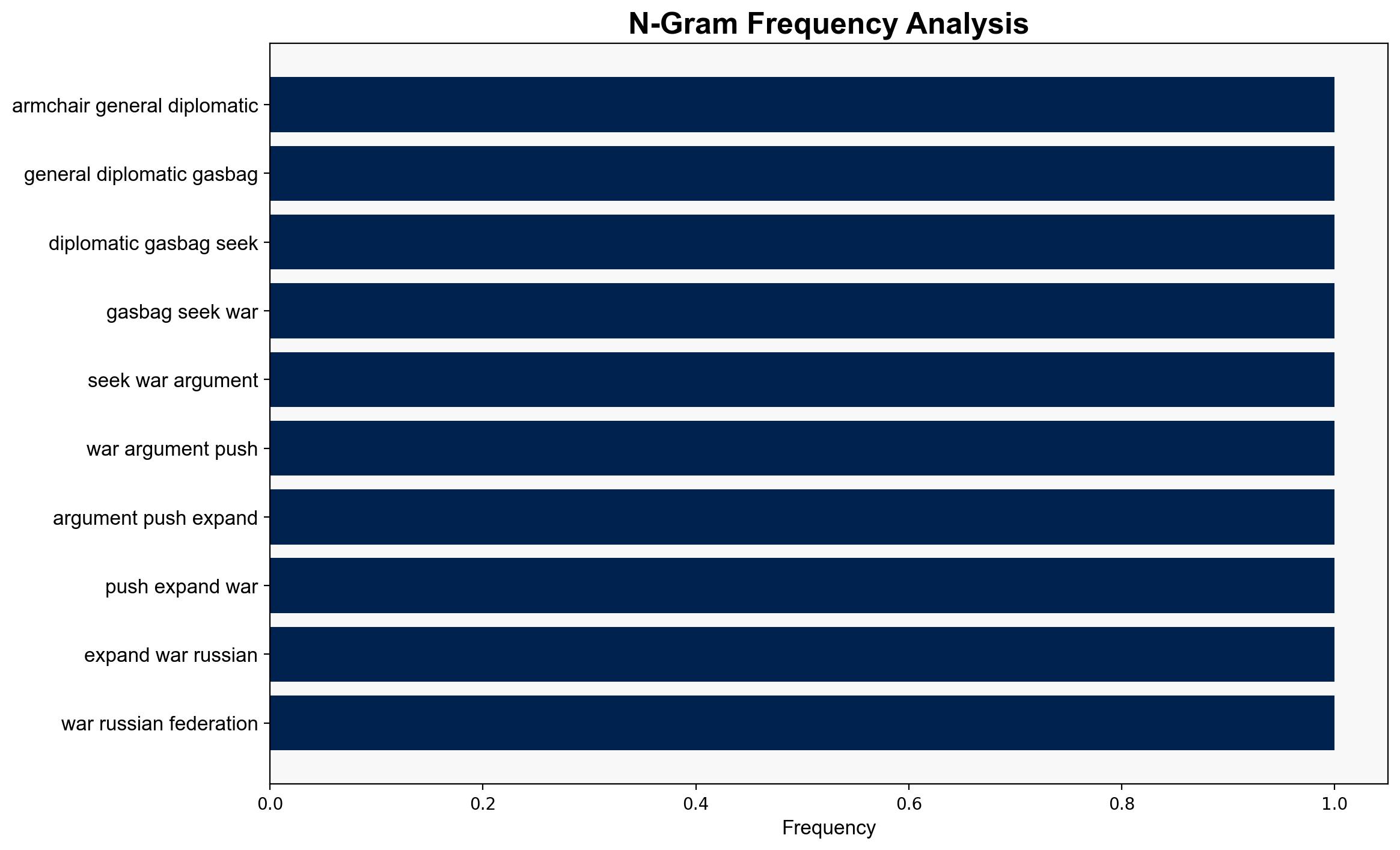Armchair Generals and Diplomatic Gasbags Seek War – Americanthinker.com
Published on: 2025-10-05
Intelligence Report: Armchair Generals and Diplomatic Gasbags Seek War – Americanthinker.com
1. BLUF (Bottom Line Up Front)
The strategic judgment indicates a moderate confidence level that the narrative of Russia as a “paper tiger” is misleading and potentially dangerous. The most supported hypothesis suggests that underestimating Russia’s military capabilities and geopolitical intentions could lead to strategic miscalculations. Recommended action includes enhancing diplomatic engagement with Russia and reinforcing NATO’s defensive posture to deter potential aggression.
2. Competing Hypotheses
1. **Hypothesis A**: Russia is a weakened state with limited military capability, posing minimal threat to the West. This view suggests that Russia’s inability to decisively win in Ukraine reflects broader systemic weaknesses.
2. **Hypothesis B**: Russia retains significant military and geopolitical capabilities, and its portrayal as a “paper tiger” is a strategic deception. This hypothesis argues that Russia’s military strategy is more about endurance and strategic positioning than immediate conquest.
Using ACH 2.0, Hypothesis B is better supported due to evidence of Russia’s continued military advancements, such as the development of hypersonic weapons, and historical resilience in prolonged conflicts.
3. Key Assumptions and Red Flags
– **Assumptions**: Hypothesis A assumes that Russia’s economic challenges directly translate to military ineffectiveness. Hypothesis B assumes Russia’s strategic patience and long-term planning.
– **Red Flags**: The narrative of Russia’s weakness could be a deliberate underestimation, potentially leading to strategic complacency. The lack of consideration for Russia’s nuclear capabilities and geopolitical alliances is a significant oversight.
– **Blind Spots**: The potential for Russia to leverage asymmetric warfare tactics, including cyber and information warfare, is not fully addressed.
4. Implications and Strategic Risks
– **Patterns**: Historical patterns of Russia’s resilience in conflicts suggest a potential for prolonged engagement in Ukraine and beyond.
– **Cascading Threats**: Misjudging Russia’s capabilities could lead to inadequate NATO preparedness, increasing the risk of regional instability.
– **Potential Escalation**: Economic sanctions and military posturing could escalate into broader conflicts involving cyber and hybrid warfare.
5. Recommendations and Outlook
- Enhance intelligence sharing and analysis within NATO to accurately assess Russia’s military capabilities and intentions.
- Increase diplomatic efforts to engage Russia in dialogue, reducing the risk of miscalculation and potential conflict escalation.
- Scenario Projections:
- **Best Case**: Diplomatic engagement leads to de-escalation and a negotiated settlement in Ukraine.
- **Worst Case**: Misjudgment of Russia’s capabilities results in a military confrontation involving NATO forces.
- **Most Likely**: Continued low-intensity conflict in Ukraine with periodic escalations and diplomatic tensions.
6. Key Individuals and Entities
– Lindsey Graham
– Keith Kellogg
– Hillary Clinton
7. Thematic Tags
national security threats, cybersecurity, counter-terrorism, regional focus





